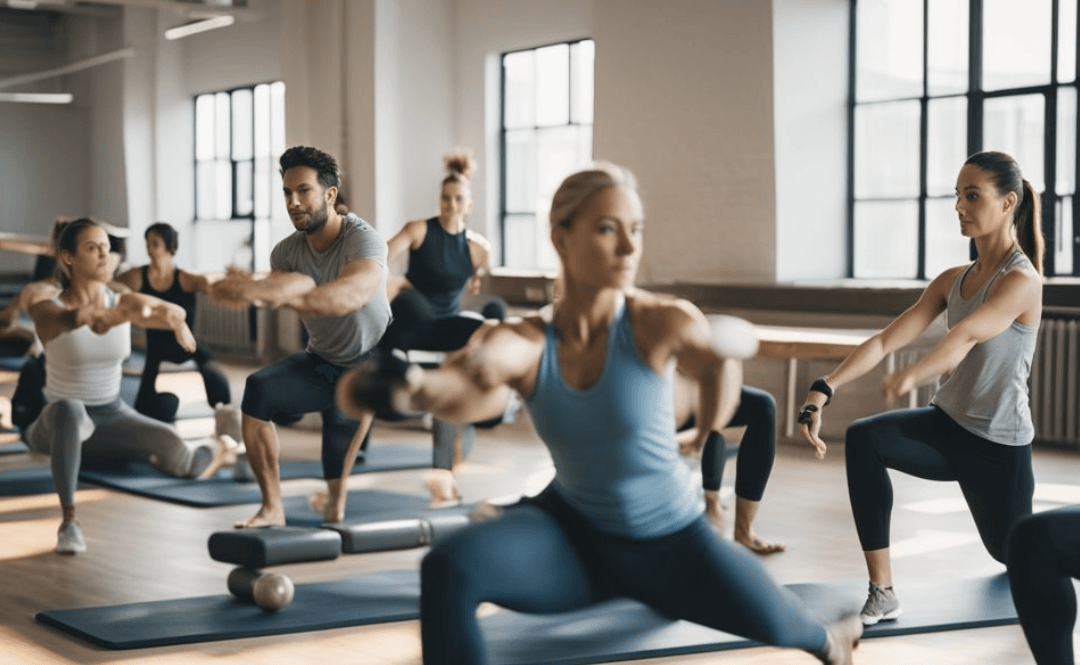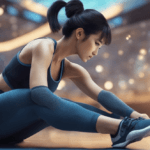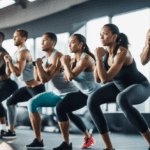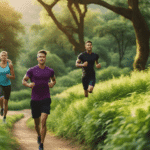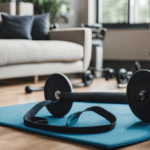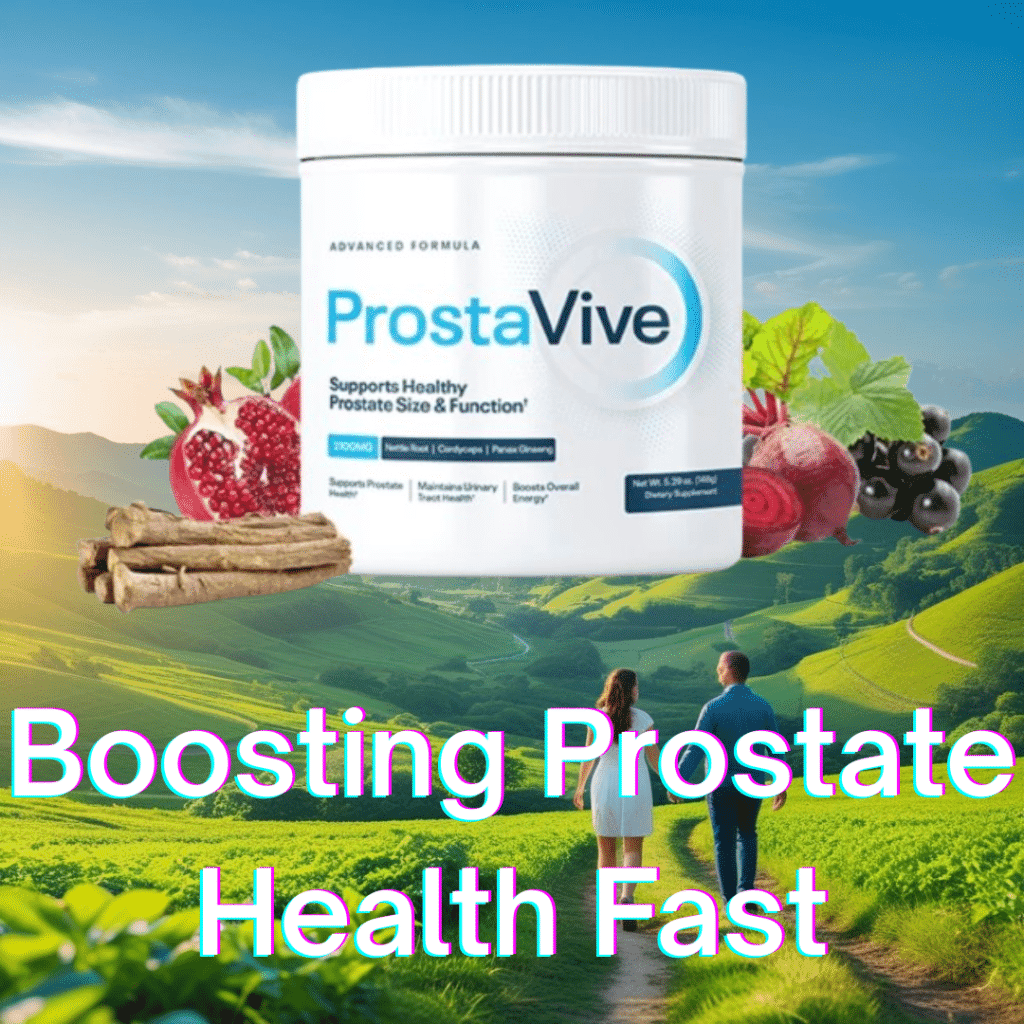Pilates is a popular form of exercise that focuses on strengthening the core muscles, improving posture, and increasing flexibility. It was developed by Joseph Pilates in the early 20th century and has since gained popularity worldwide. Pilates is a low-impact exercise that can be done by people of all ages and fitness levels.
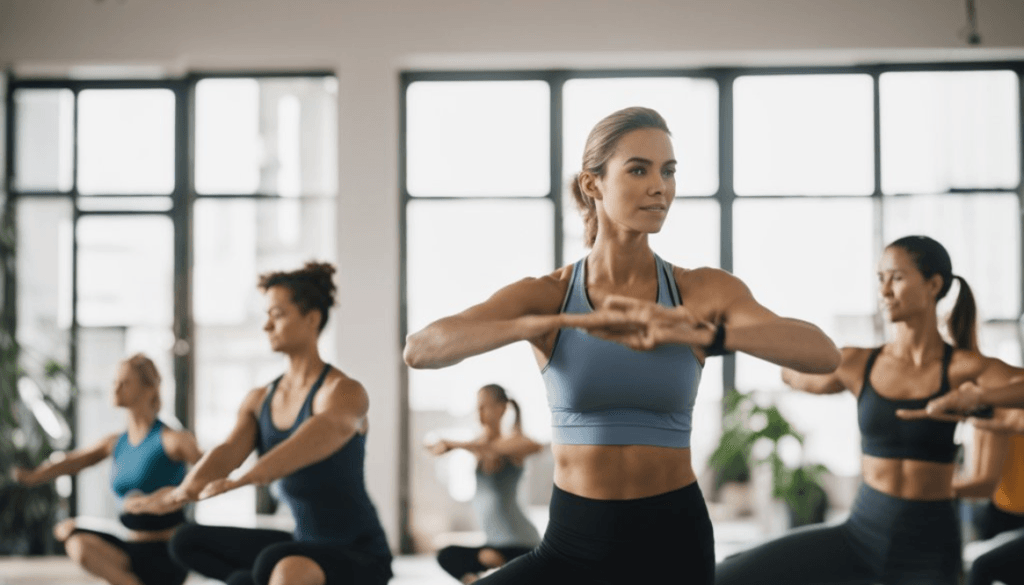
At its core, Pilates is about strengthening the muscles that support the spine, pelvis, and hips. These muscles are collectively known as the “core” and include the rectus abdominis, obliques, transverse abdominis, and erector spinae. By strengthening these muscles, Pilates can help improve posture, reduce the risk of injury, and enhance overall fitness.
Key Takeaways
- Pilates is a low-impact exercise that focuses on strengthening the core muscles, improving posture, and increasing flexibility.
- Pilates is suitable for people of all ages and fitness levels.
- By strengthening the core muscles, Pilates can help improve posture, reduce the risk of injury, and enhance overall fitness.
Fundamentals of Pilates
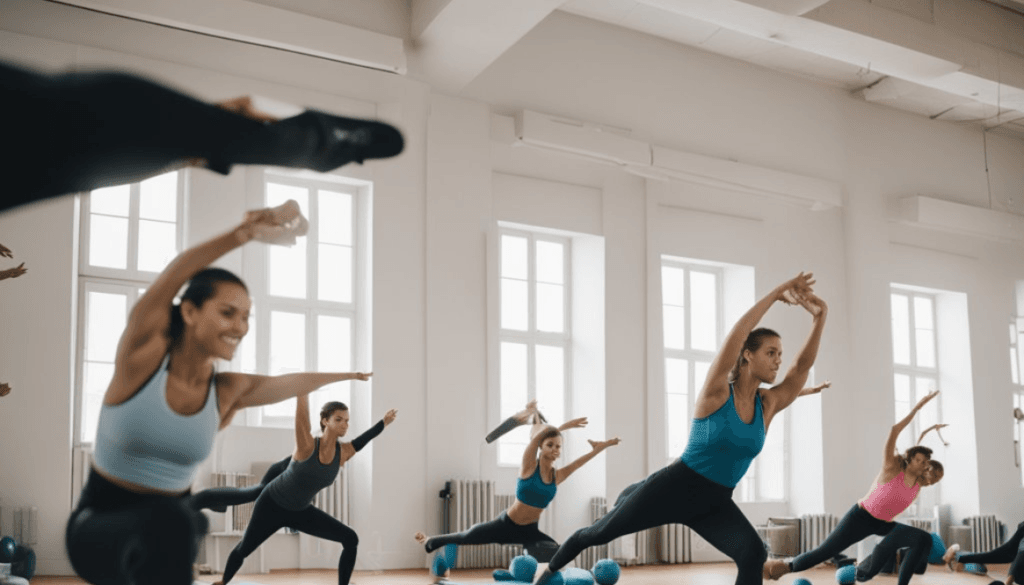
Pilates is a form of exercise that focuses on building core strength, flexibility, and balance. It is a low-impact workout that emphasizes controlled movements and proper alignment. In this section, we will discuss the fundamentals of Pilates and how it can help improve your core strength.
Pilates Principles
Pilates is based on six principles: concentration, control, centering, breathing, precision, and flow. These principles are essential to the practice of Pilates and help to ensure that you are performing the exercises correctly.
Concentration involves focusing your mind on the task at hand and being aware of your body’s movements. Control involves using your muscles to control your movements and maintain proper form. Centering involves engaging your core muscles to support your spine and maintain balance. Breathing involves using deep, controlled breaths to oxygenate your body and improve your focus. Precision involves performing each movement with intention and accuracy. Flow involves moving smoothly from one exercise to the next.
Core Elements of Pilates
The core elements of Pilates are the foundation of the practice. They include the use of the powerhouse, proper alignment, and controlled movements.
The powerhouse refers to the muscles of the abdomen, lower back, hips, and buttocks. These muscles work together to provide stability and support for the rest of the body. Proper alignment involves maintaining a neutral spine and engaging the core muscles to support the spine and maintain balance. Controlled movements involve performing each exercise slowly and deliberately, with a focus on proper form and alignment.
In conclusion, Pilates is a low-impact workout that focuses on building core strength, flexibility, and balance. It is based on six principles: concentration, control, centering, breathing, precision, and flow. The core elements of Pilates include the use of the powerhouse, proper alignment, and controlled movements. By incorporating these principles into your Pilates practice, you can improve your core strength and overall fitness.
Core Strengthening Exercises
When it comes to Pilates, core strengthening exercises are the bread and butter of the practice. These exercises work to strengthen the abdominals, obliques, and stability muscles, which in turn can improve posture, balance, and overall strength. In this section, we will cover some of the most effective Pilates exercises for core strength.
The Hundred
The Hundred is a classic Pilates exercise that targets the abdominals and breathing. To perform this exercise, lie on your back with your knees bent and feet flat on the floor. Lift your head, neck, and shoulders off the mat and extend your arms straight out in front of you. Begin pumping your arms up and down while inhaling for five counts and exhaling for five counts. Repeat this for a total of 100 counts.
Plank Variations
Plank variations are another great way to strengthen the core muscles. The standard plank involves holding a push-up position with your arms straight and your body in a straight line from head to heels. To make this exercise more challenging, try lifting one leg or arm off the ground or adding a side plank by rotating onto one arm and stacking your feet on top of each other.
Leg Circles and Single Leg Stretch
Leg circles and single leg stretch are two Pilates exercises that target the lower abdominals. To perform leg circles, lie on your back with your legs extended straight up in the air. Slowly circle your legs in one direction, making sure to keep your lower back pressed into the mat. To perform single leg stretch, lie on your back with your knees bent and feet flat on the floor. Lift your head, neck, and shoulders off the mat and bring one knee into your chest while extending the other leg straight out. Switch legs and repeat.
By incorporating these Pilates exercises into your workout routine, you can improve your core strength, stability, and overall fitness. Remember to focus on proper form and technique to get the most out of each exercise.
Improving Posture and Flexibility
Maintaining good posture is essential for a healthy spine and back muscles. Pilates is an excellent way to improve posture and flexibility while strengthening your core. In this section, we will discuss two Pilates exercises that can help improve your posture and flexibility: Roll Up and Roll-Down, and Swan Dive and Swimming Prep.
Roll Up and Roll-Down
Roll Up is a Pilates exercise that helps improve your mobility and spinal flexibility. To perform this exercise, sit on the mat with your legs straight and together. Reach your arms overhead, and slowly roll down one vertebra at a time until your hands touch the mat. Then, slowly roll up one vertebra at a time until you are sitting upright again. Repeat this exercise 5-10 times.
Roll-Down is a variation of Roll Up that focuses on spinal flexion. To perform this exercise, stand with your feet hip-width apart and your arms extended overhead. Slowly roll down one vertebra at a time until your fingertips touch the mat. Then, slowly roll up one vertebra at a time until you are standing upright again. Repeat this exercise 5-10 times.
Swan Dive and Swimming Prep
Swan Dive is a Pilates exercise that helps improve your posture and strengthen your back muscles. To perform this exercise, lie on your stomach with your arms extended overhead. Lift your chest and arms off the mat, and then lower back down. Repeat this exercise 5-10 times.
Swimming Prep is a variation of Swan Dive that focuses on strengthening your back muscles. To perform this exercise, lie on your stomach with your arms extended overhead. Lift your chest and arms off the mat, and then lift your legs off the mat as well. Hold this position for a few seconds, and then lower back down. Repeat this exercise 5-10 times.
In conclusion, Pilates is an excellent way to improve your posture and flexibility while strengthening your core. Roll Up and Roll-Down, and Swan Dive and Swimming Prep are two Pilates exercises that can help improve your posture and flexibility. By incorporating these exercises into your Pilates routine, you can achieve a healthier spine and stronger back muscles.
Pilates for Specific Needs
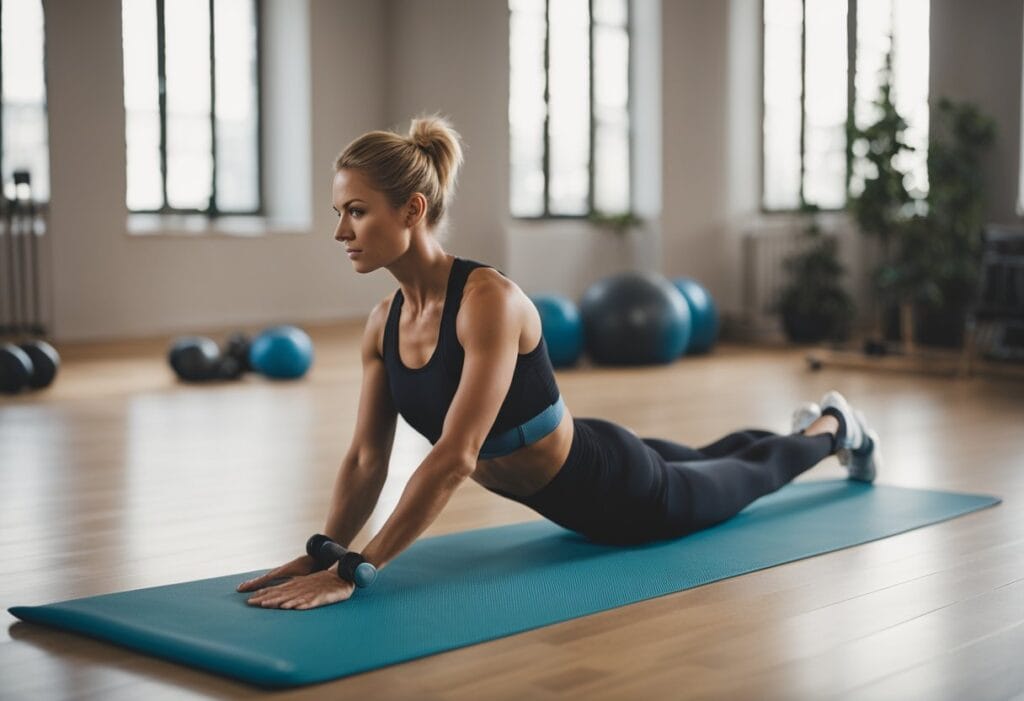
Pilates is a versatile form of exercise that can be adapted to suit specific needs. Whether you’re dealing with back pain, looking to enhance your athletic performance, or seeking a low-impact exercise option as a senior, Pilates can be a great choice. In this section, we’ll explore some of the ways that Pilates can be tailored to meet specific needs.
Addressing Back Pain
Back pain is a common issue that can be caused by a range of factors, including poor posture, muscle imbalances, and injury. Pilates can be an effective way to address back pain by strengthening the muscles that support the spine and improving overall posture. Some Pilates exercises that can be particularly helpful for those dealing with back pain include pelvic tilts, bridging, and the cat-cow stretch.
Pilates for Athletes
Pilates can also be a great option for athletes looking to enhance their performance. By focusing on core strength, stability, and flexibility, Pilates can help athletes improve their balance, coordination, and overall body control. Additionally, Pilates can be a low-impact way to cross-train and prevent injury. Some Pilates exercises that can be particularly beneficial for athletes include the single-leg stretch, the roll-up, and the spine stretch forward.
Pilates for Seniors
As we age, it’s important to maintain strength, flexibility, and balance to prevent falls and maintain overall health. Pilates can be a great option for seniors looking to stay active and healthy. Pilates exercises can be modified to suit different fitness levels and abilities, making it a safe and effective option for seniors. Additionally, Pilates can help to improve posture and alleviate lower back pain, which can be common issues for older adults. Some Pilates exercises that can be particularly helpful for seniors include the seated leg lift, the standing balance, and the pelvic tilt.
In summary, Pilates can be a versatile form of exercise that can be adapted to meet specific needs. Whether you’re dealing with back pain, looking to enhance your athletic performance, or seeking a low-impact exercise option as a senior, Pilates can be a great choice. By focusing on core strength, stability, and flexibility, Pilates can help to improve overall health and well-being.
Advanced Techniques and Equipment
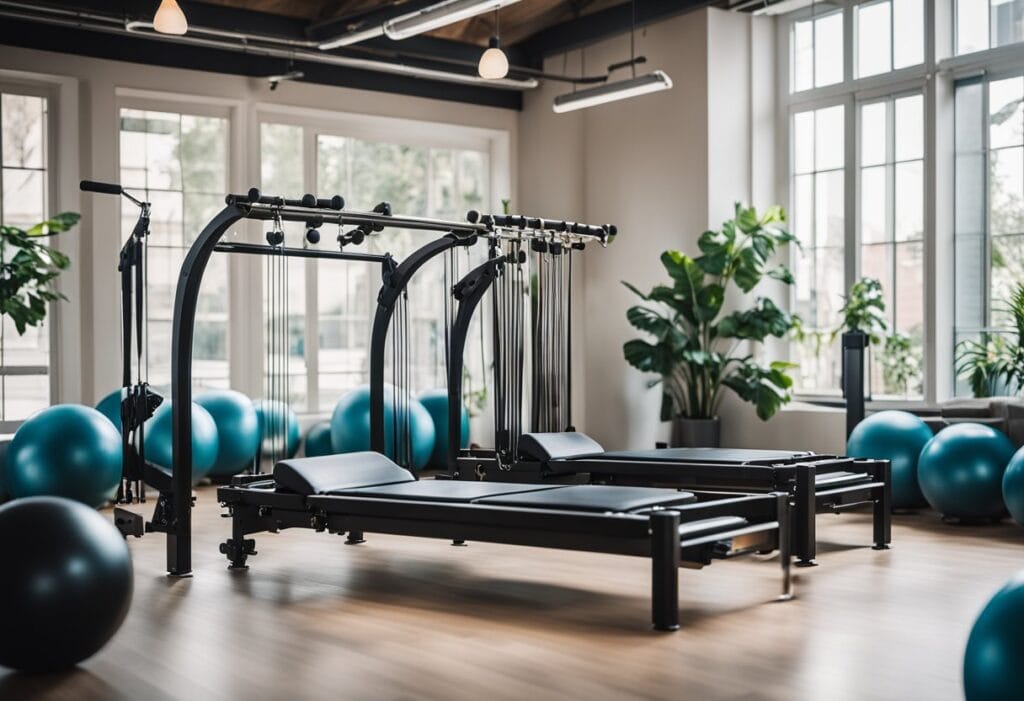
At this point in our Pilates journey, we are ready to take on more challenging exercises and incorporate advanced equipment. Using the Pilates Reformer, Pilates Chair, and Cadillac can help us take our practice to the next level.
Using the Pilates Reformer
The Pilates Reformer is a piece of equipment that provides resistance through a series of springs and straps. It allows us to perform a wide range of exercises that target different muscle groups. By adjusting the resistance and the position of the carriage, we can modify the exercises to suit our level of fitness.
Some of the advanced exercises that we can perform on the Pilates Reformer include the Short Box Series, the Long Stretch Series, and the Elephant. These exercises challenge our core strength, balance, and coordination. It is important to perform these exercises under the guidance of a qualified instructor to ensure that we are using the equipment safely and efficiently.
Pilates Chair and Cadillac
The Pilates Chair and Cadillac are two other pieces of equipment that can help us take our practice to the next level. The Pilates Chair is a compact piece of equipment that provides resistance through a system of springs and pedals. It allows us to perform exercises that target our legs, core, and upper body.
The Cadillac, on the other hand, is a larger piece of equipment that provides a wide range of exercises that target different muscle groups. It includes a series of bars, straps, and springs that allow us to perform exercises in different positions, including lying down, standing, and sitting.
When using the Pilates Chair and Cadillac, it is important to make modifications to suit our level of fitness. It is also important to use the equipment safely and efficiently to avoid injury.
Incorporating advanced techniques and equipment into our Pilates practice can help us build core strength, improve our posture, and increase our overall fitness level. By working with a qualified instructor and making modifications to suit our level of fitness, we can perform these exercises safely and efficiently.
If you want to learn more, have a loom at Pilates to Improve Core Muscle Activation in Chronic Low Back Pain: A Systematic Review

